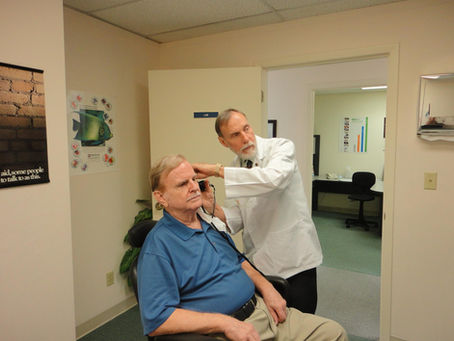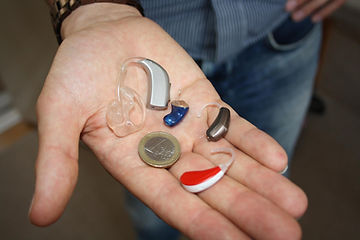
Exploring Hearing Impairment
It is our mission to serve the greater community and doing so comes with understanding how different impairments can impact individuals. By 2050, it is estimated that around one in every ten people will experience disabling hearing loss. Hearing loss can be a daunting diagnosis, but with the right information, support, and preparation, we can help each other better understand the disability.
Causes
There are several causes of hearing loss which can happen throughout an individual’s life span. Before birth, genetic factors such as hereditary hearing loss can contribute. During birth, low birth weight and lack of oxygen at birth can affect hearing. In childhood, frequent ear infections can cause hearing loss. Throughout life, smoking, loud noises and trauma to the ear and head are some of the many factors contributing to one’s hearing loss probability. Because of the wide range of factors contributing to hearing loss, the most effective way to prevent loss is preparation.
Types of technology

Luckily for us, science and technology are constantly developing hearing-aiding gadgets called Hearing Assistive Technology (HAT). There are two primary forms of HAT, Hearing aids and Personal Sound Amplification Products (PSAPs), which each approach hearing loss differently. Hearing aids are only available with a prescription from an audiologist and are regulated by the FDA.
Hearing aids can help compensate for the distortion and difficulty hearing that comes with hearing loss. PSAPs are not FDA regulated, do not require a prescription, and are used more often for hearing support in environments with heavy background noise. Doctors recommend to anyone experiencing hearing difficulty to immediately seek a specialist for an accurate diagnosis and treatment plan.
American Sign Language
Learning American Sign Language (ASL) can be a helpful tool for those affected by hearing impairments, as well as for those around them. There is no universal way to sign as it varies by country. It is typically recommended to introduce a deaf child to sign language early on to help them learn to communicate effectively. Most children that are born deaf are born to hearing parents, so parents often learn ASL along with their child. In the U.S., newborns are screened for hearing before leaving the hospital, so if a newborn has hearing loss, their parents can discuss ASL and other communication options with a physician.

How to support loved ones
There are many ways to help a loved one experiencing hearing difficulty. Some strategies include:
- Preparation for events: before a gathering, send out this guide for successful communication to attendees
- Show empathy for the person experiencing hearing loss
- Use natural facial expressions and gestures
- Speak at a pace that’s easy to follow and at a clear, normal volume
- Try rephrasing something if it’s not being understood- some words are easier to hear than others
- Be patient and don’t give up on communicating your message!
- Attend hearing appointments with them
- More tips here
We hope this article provides some peace of mind to those concerned about hearing loss. Libertana utilizes a holistic approach to caring for clients experiencing hearing loss, and provides support to their families. If you or someone you know is experiencing hearing difficulty, we have linked more resources here.


